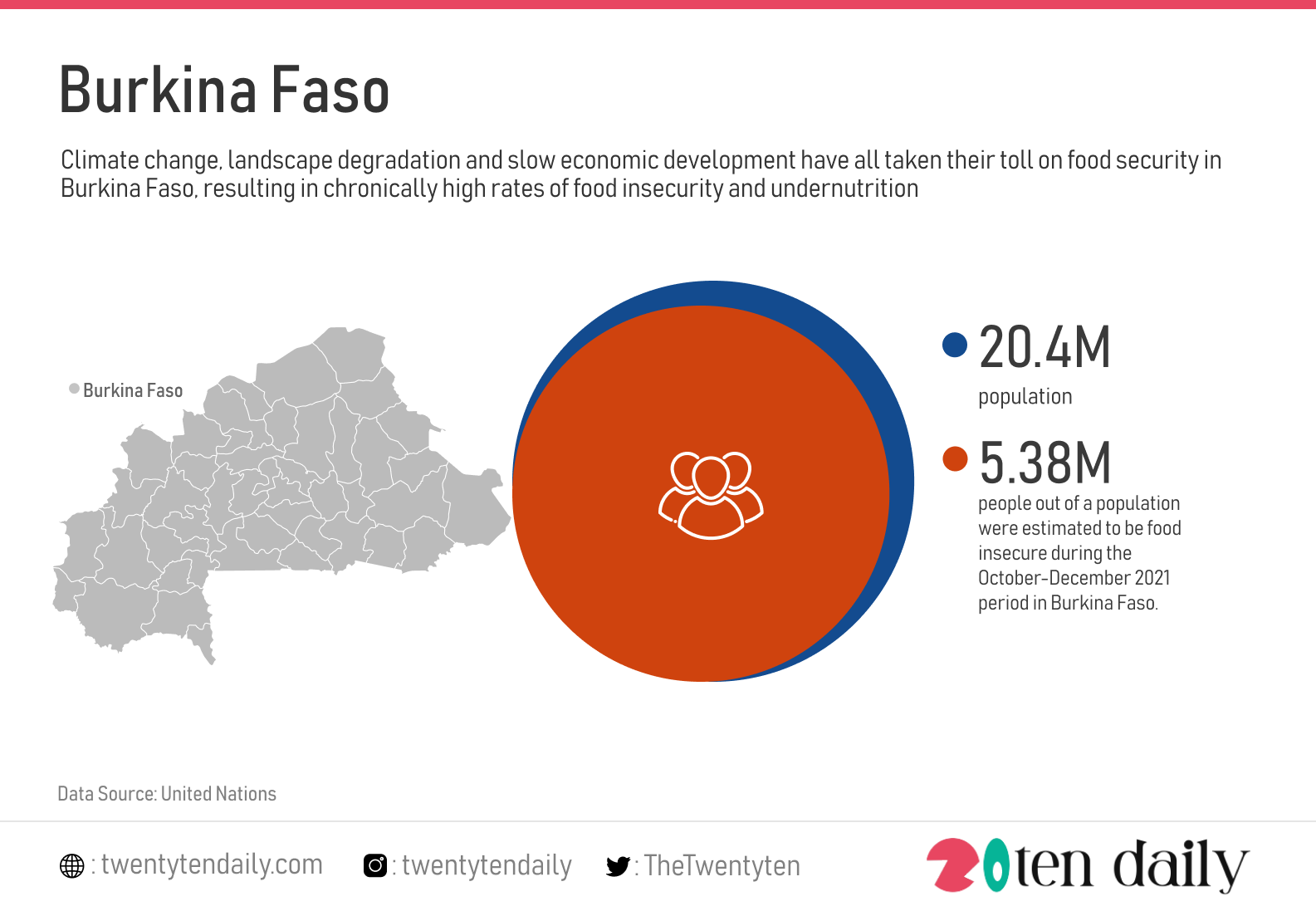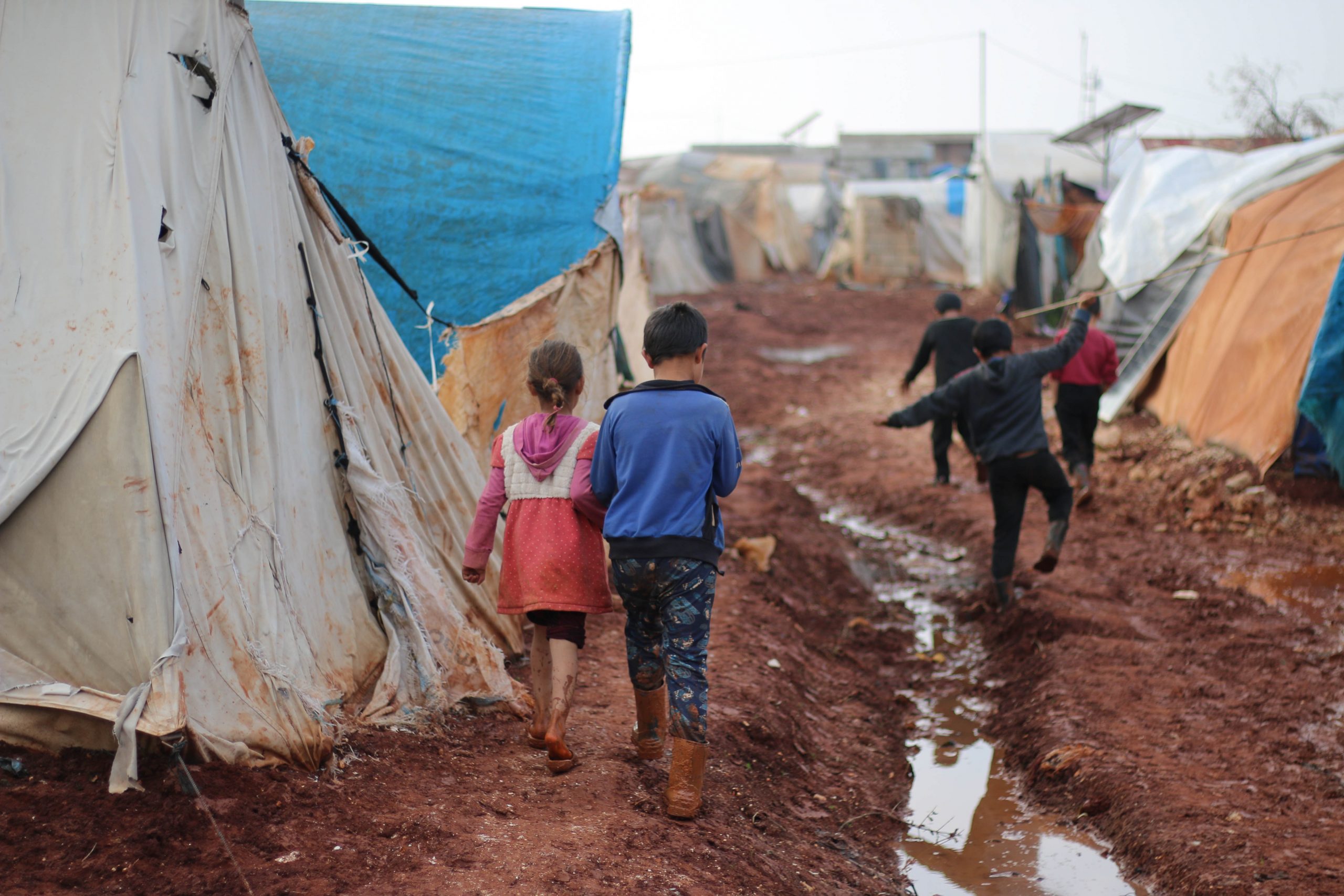Visualizing Food Insecurity In Sub-Saharan Africa
Recent reports by the United Nations have shown varying degrees of food insecurity across the globe, with alarming rates found especially in Sub-Saharan Africa. The COVID-19 pandemic, constant conflict, drought, economic woes, and extreme weather have been labelled as active causes of food shortage across the world, according to the 2022 UN Global Humanitarian review (pdf).
As of 2019, 234 million sub-Saharan Africans were chronically undernourished, more than in any other region. In the whole of Africa, 250 million people were experiencing hunger, which is nearly 20% of the population.
Below are maps visualizing some of the countries in Sub-Saharan Africa in desperate need of food.
Sudan
Sudan has one of the highest levels of food insecurity around the world. Current data shows that an estimated 7.3 million people in Sudan are at high levels of food insecurity and require urgent action. Of these, around 5.5 million people are classified in Crisis stages while around 1.8 million are classified under emergency level.
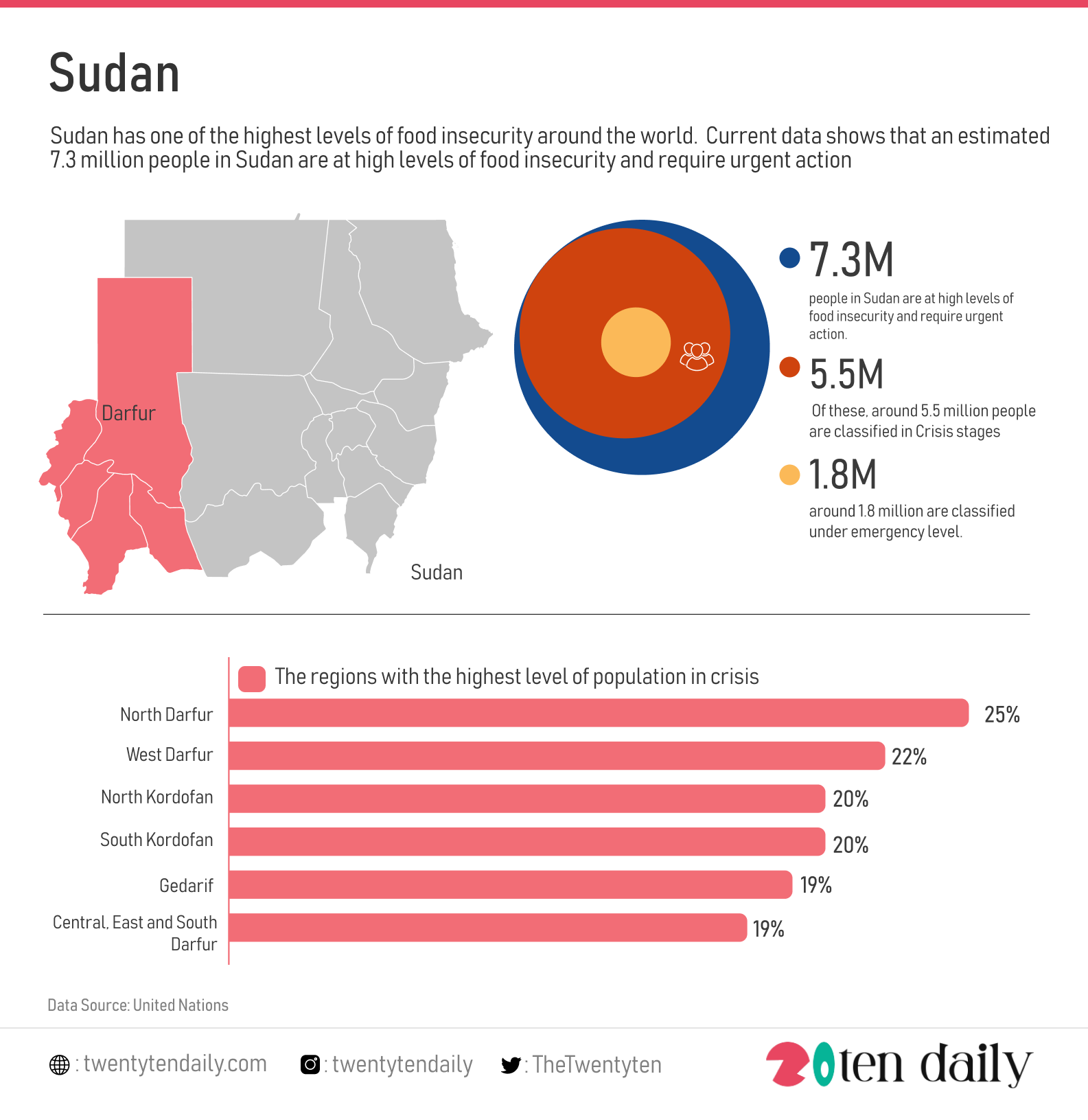
An increase in localized conflicts, unfavourable climatic conditions like flooding, have triggered population displacement, which, combined with the deterioration of the economy, have led to higher than usual levels of acute food insecurity.
The regions with the highest level of population in crisis include North Darfur at 25%, followed by West Darfur (22%), North Kordofan (20%), South Kordofan (20%), Gedarif (19%) and Central, East and South Darfur states, ranging from 17-18%.
The Democratic Republic of the Congo
The West African nation has the largest number of food-insecure people at 43.3 million out of its population of 106 million.
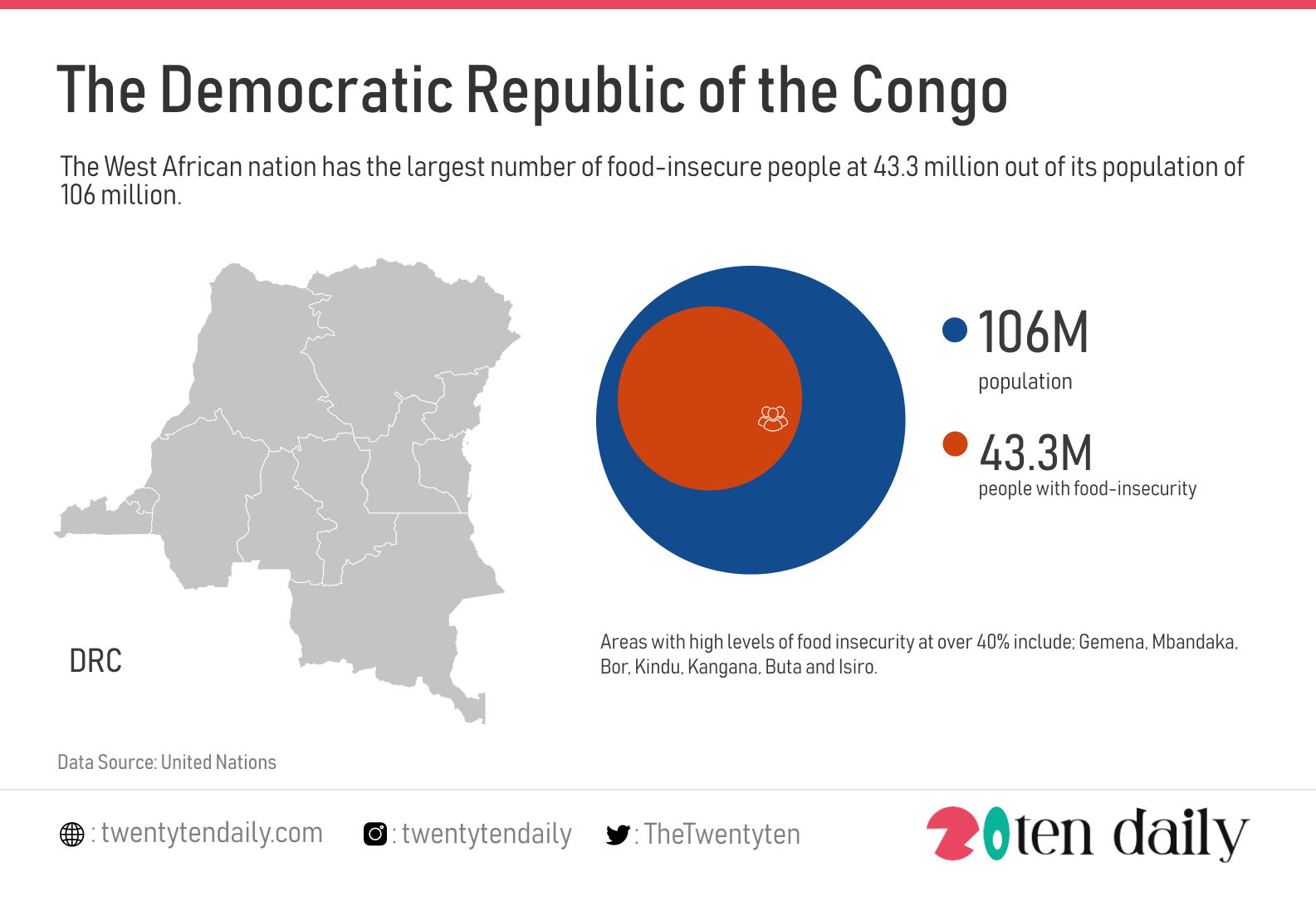
According to Integrated Food Security Phase Classification (IPC), 27 million people in the DRC are highly food insecure, with 857,000 children and 468,000 women likely suffering from acute malnutrition.
Areas with high levels of food insecurity at over 40% include; Gemena, Mbandaka, Bor, Kindu, Kangana, Buta and Isiro.
Zimbabwe
According to recent data released by the United Nation’s Food and Agriculture Organization, about 3.38 million people are projected to suffer from acute food insecurity despite 60-70% of its population being actively engaged in the agricultural sector. 74,300 children have been fall under the malnourished line while 38,400 are acutely malnourished.
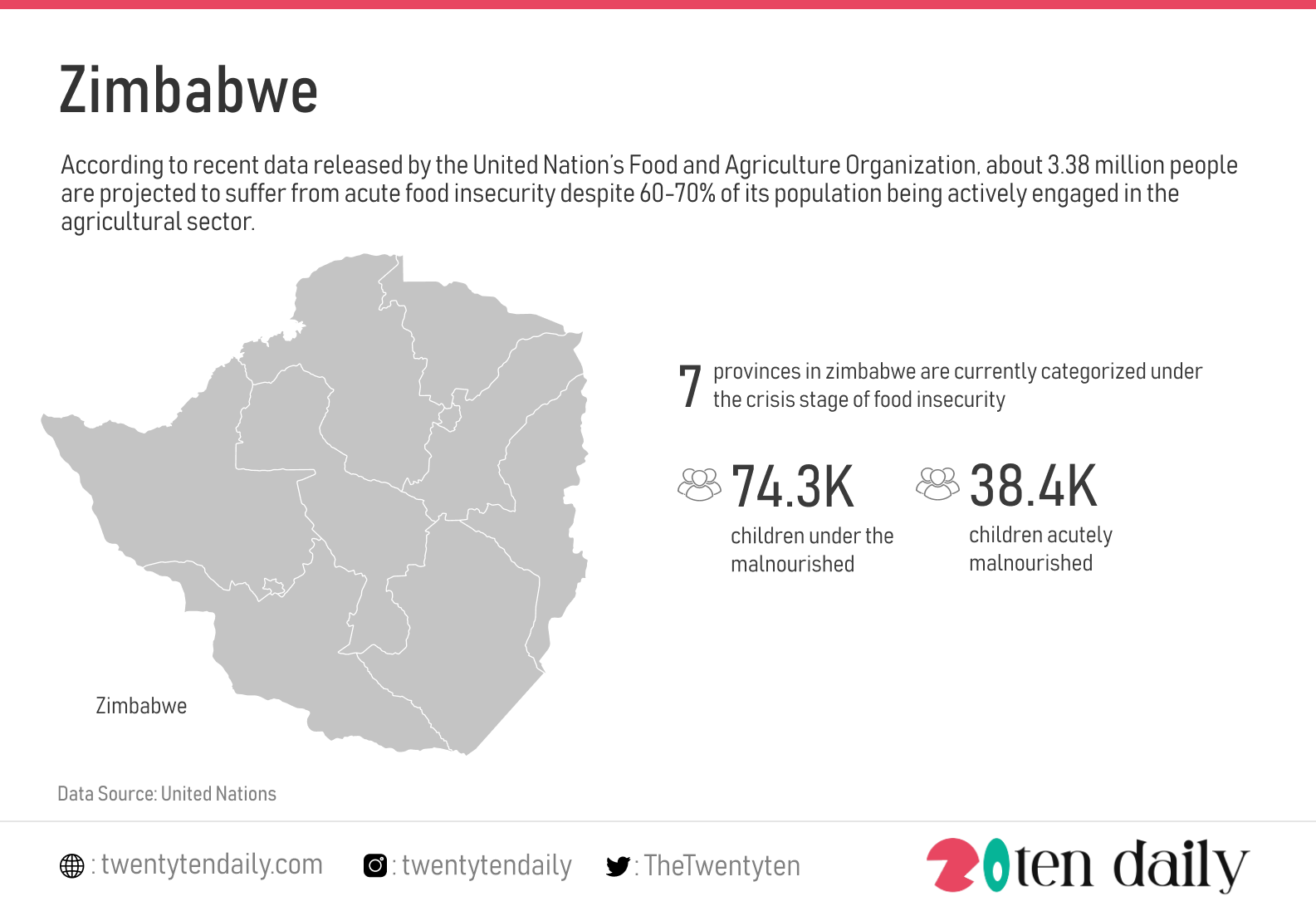
Data between October 2021 to January 2022 show that at least 7 provinces in Zimbabwe are currently categorized under the crisis stage of food insecurity. They include; Midlands, Masvingo, Matebeleland South, Mashonaland East, Manicaland, Bulawayo and the nation’s capital, Harare.
Somalia
Deteriorating security conditions and a crippling dry season has left upwards of 90 percent (11.4 million) of the East African country’s 12.3 million people hungry.
According to Famine Early Warning Systems, people have experienced not only a decrease in food supply and income, but also a prolonged drought, flooding in early 2020, a desert locust surge, the economic impact of COVID-19, and security issues with armed groups. These have made the dire situation extremely complex.
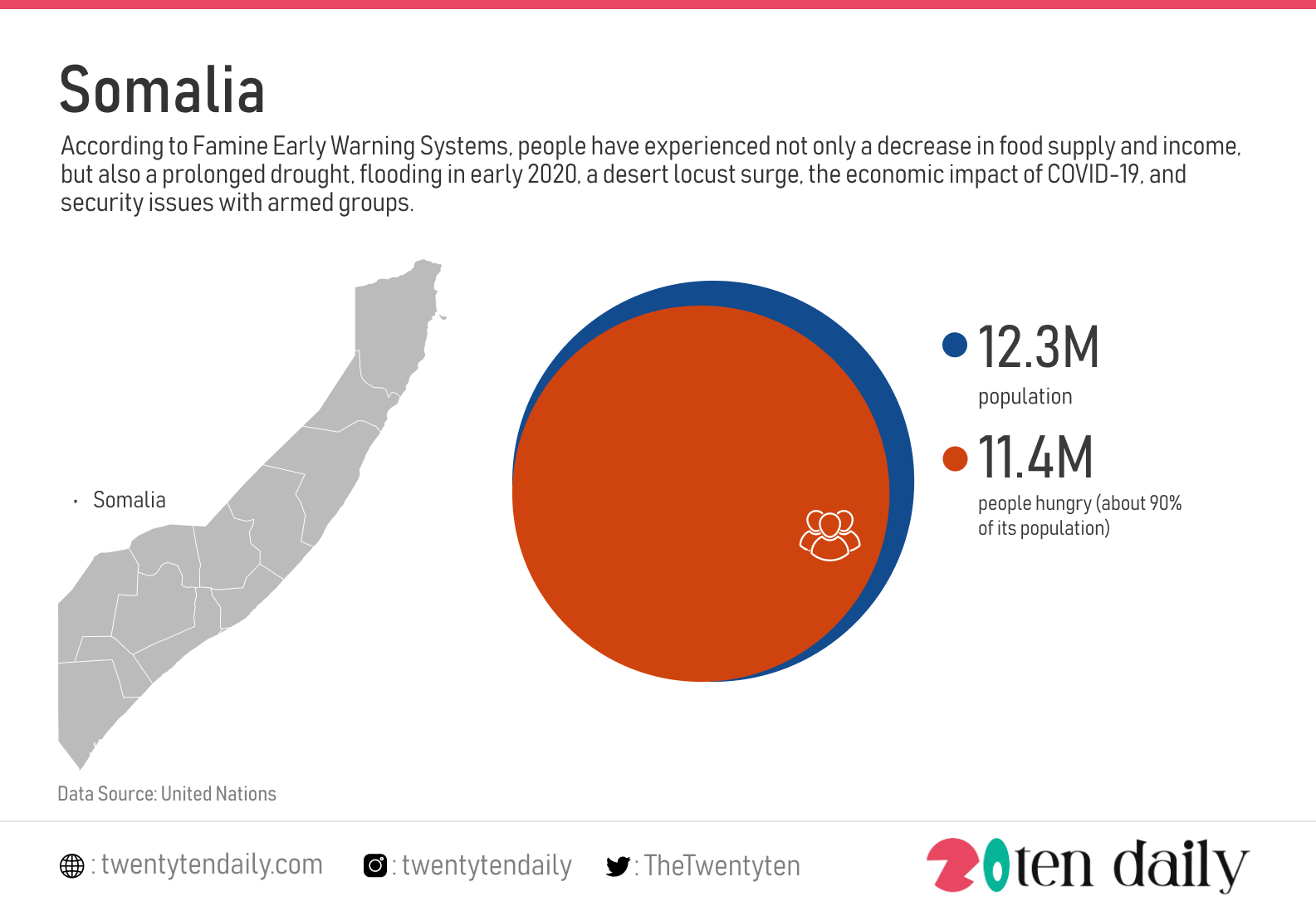
Burkina Faso
Climate change, landscape degradation and slow economic development have all taken their toll on food security in Burkina Faso, resulting in chronically high rates of food insecurity and undernutrition. 5.38 million people out of a population of about 20.4 million were estimated to be food insecure during the October-December 2021 period in Burkina Faso.
Two provinces in the Sahel region – Oudalan and Soum – have been driven into the Emergency phase of food insecurity, according to recent reports by the World Food Programme.
